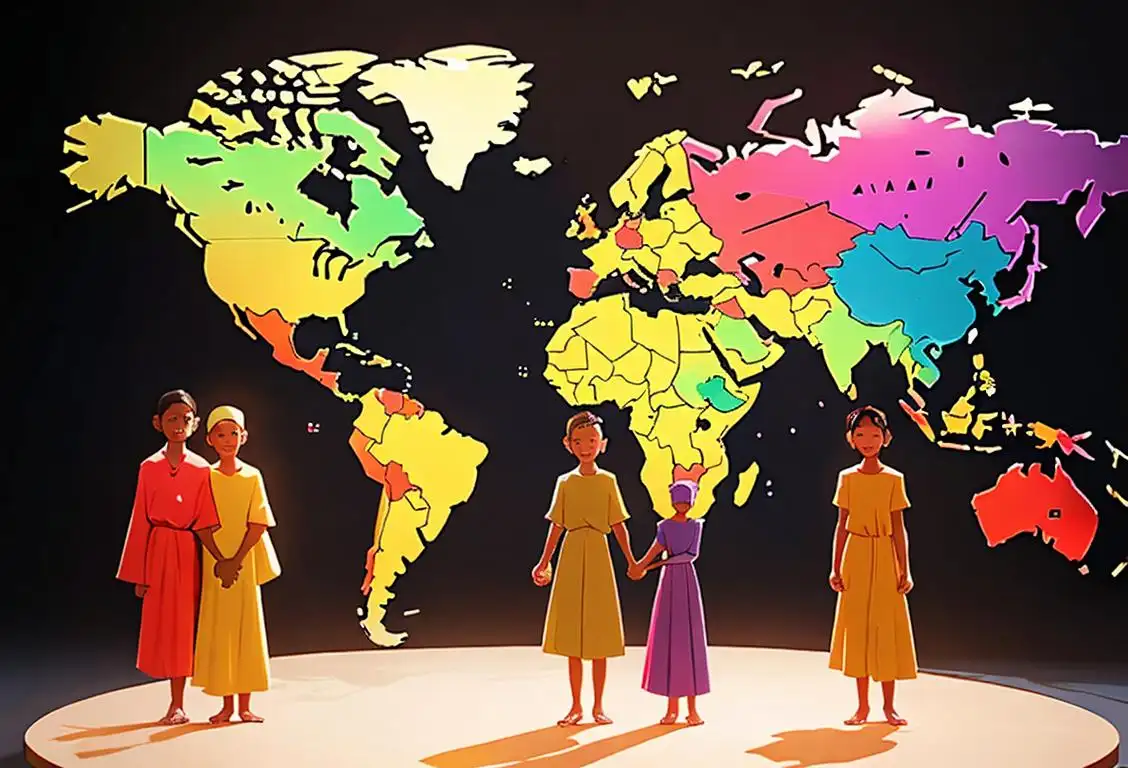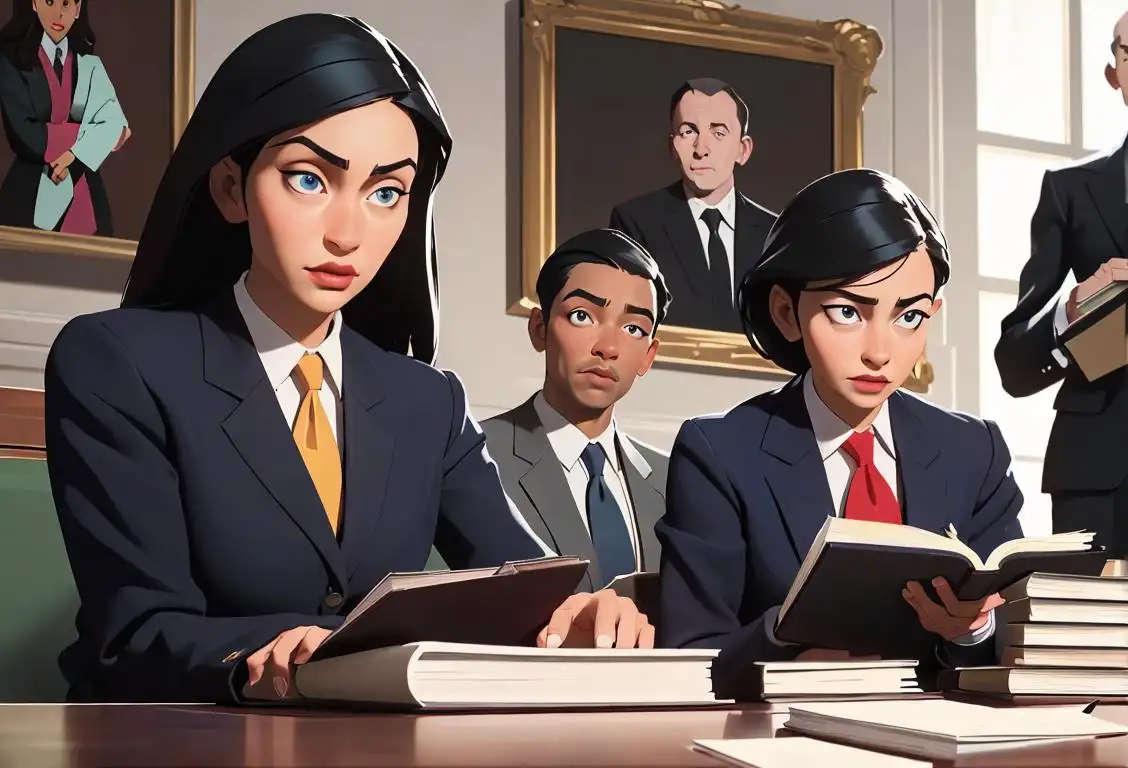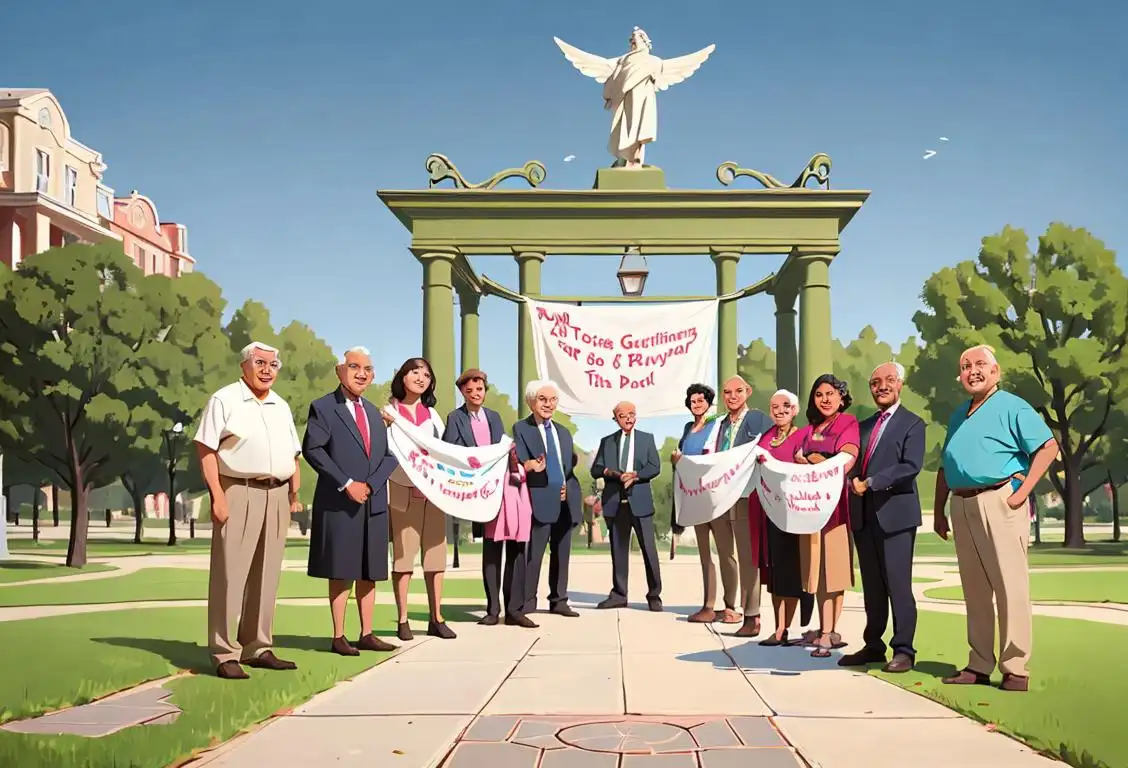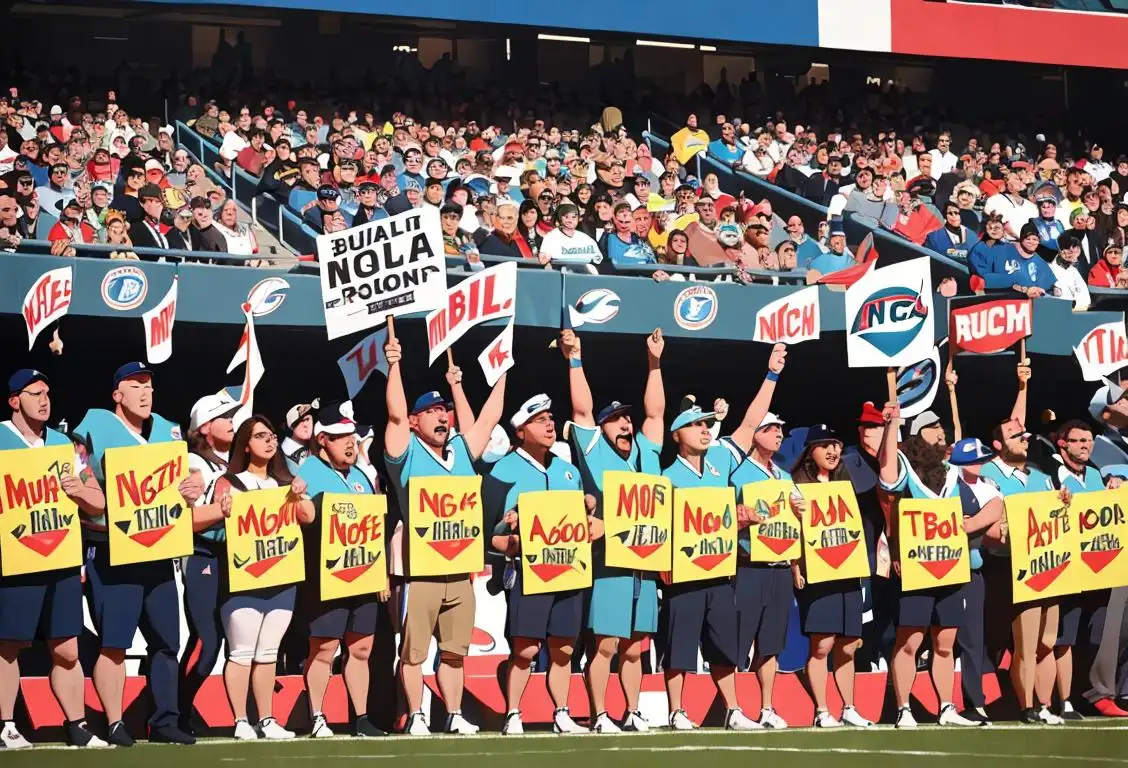National Human Trafficking Awaremess Day

Welcome to WhatNationalDayIsIt.com! Today, we're diving into the important topic of National Human Trafficking Awareness Day. Strap in and get ready to learn all about this national day and how it has become a platform for raising awareness and fighting against one of the darkest crimes in our society.
When is Human Trafficking Awaremess Day?
It's national human trafficking awaremess day on the 11th January.
The Origins of National Human Trafficking Awareness Day
Every year on January 11th, National Human Trafficking Awareness Day sheds light on the heinous crime of modern-day slavery. This day serves as a reminder of the ongoing fight against human trafficking and encourages people to take action to combat this global issue.
In order to understand the significance of this day, it's important to recognize the history behind it. National Human Trafficking Awareness Day was first designated by the United States Congress in 2007 with the passage of the Trafficking Victims Protection Reauthorization Act.
Raising Awareness and Taking Action
Human trafficking remains a pressing concern worldwide, affecting millions of men, women, and children. National Human Trafficking Awareness Day provides an opportunity to educate ourselves and others about the signs of trafficking and how we can support survivors.
Throughout the years, numerous organizations, non-profits, and activists have worked tirelessly to bring awareness to this issue. Their efforts have led to crucial legislation, increased funding for victim services, and enhanced law enforcement response to combat trafficking.
On National Human Trafficking Awareness Day, communities organize events, conferences, and workshops to educate the public, raise funds for victim support services, and promote prevention measures. It's a time to come together, learn from each other, and create a united front against the perpetrators of this crime.
The Internet's Role in Fighting Trafficking
The internet has played a vital role in raising awareness and combating human trafficking. Through the power of social media, online campaigns, and digital platforms, advocacy groups have been able to reach a wider audience and educate individuals on the signs of trafficking.
Moreover, law enforcement agencies have utilized technology and online tools to investigate and track down perpetrators. The internet, once seen as a tool for exploitation, has become a powerful weapon in the fight against human trafficking.
History behind the term 'Human Trafficking Awaremess'
1927
The First International Convention
In 1927, the League of Nations held the first international convention to address the issue of human trafficking. This convention aimed to create a unified response to combat the illegal trade of human beings across borders. The focus was on preventing and suppressing the trafficking of women and children for exploitative purposes.
1910
Formation of the International Agreement
In 1910, various countries came together and signed an international agreement known as the International Convention for the Suppression of the White Slave Traffic. The focus of this agreement was to combat the trafficking of women and children for exploitative purposes, particularly in the form of forced prostitution. This marked an important step in raising awareness about the issue and establishing a global commitment to addressing human trafficking.
1994
The United Nations Convention Against Transnational Organized Crime
In 1994, the United Nations General Assembly adopted the United Nations Convention Against Transnational Organized Crime, also known as the Palermo Convention. This international legal framework aimed to address various forms of organized crime, including human trafficking. It recognized human trafficking as a serious crime and violation of human rights, marking a pivotal step in raising global awareness.
1990
Coined Term
The term 'human trafficking awareness' was coined in 1990 to describe the growing recognition of the global issue of human trafficking. Human trafficking refers to the illegal trade of human beings, often for the purpose of forced labor, sexual exploitation, or other forms of exploitation.
2000
The United Nations Protocol
In the year 2000, the United Nations General Assembly adopted the United Nations Convention against Transnational Organized Crime and its protocol to prevent, suppress and punish trafficking in persons. This protocol provided a comprehensive framework to combat human trafficking, defining it as the recruitment, transportation, transfer, harboring, or receipt of persons by means of force, coercion, or deception, for the purpose of exploitation.
2000
International Attention
In the early 2000s, awareness about human trafficking started gaining international attention. Governments, non-governmental organizations (NGOs), and activists across the globe began to recognize the urgent need to combat this modern-day form of slavery. Efforts were made to raise public awareness and educate people about the various aspects of human trafficking.
1927
Shifting Terminology
In 1927, the term 'white slave traffic' was replaced by 'traffic in women' in an effort to reflect a broader understanding of the issue. This change acknowledged that human trafficking involved individuals of various races and genders, emphasizing the universal nature of the problem. This shift in terminology was a crucial recognition of the need for a more inclusive approach to combating human trafficking.
2000
The United Nations Protocol to Prevent, Suppress and Punish Trafficking in Persons
In the year 2000, the United Nations General Assembly supplemented the Palermo Convention by adopting the Protocol to Prevent, Suppress and Punish Trafficking in Persons. This protocol focused specifically on combating and preventing human trafficking. It provided a comprehensive definition of trafficking and laid down obligations for member states to better identify and prosecute traffickers while protecting and supporting victims.
2000
The United Nations Protocol
The year 2000 witnessed a major milestone in the recognition of human trafficking as a human rights violation. The United Nations adopted the Protocol to Prevent, Suppress and Punish Trafficking in Persons, Especially Women and Children, which supplemented the United Nations Convention against Transnational Organized Crime. This protocol provided a comprehensive framework for addressing human trafficking and raising awareness globally. It highlighted the importance of prevention, protection of victims, and prosecution of traffickers.
2003
The Global Report on Trafficking
In 2003, the United Nations Office on Drugs and Crime (UNODC) published its first Global Report on Trafficking in Persons. This report presented a comprehensive analysis of the global trafficking situation, covering issues such as the scale of the problem, profiles of victims and traffickers, and the legal frameworks in different countries. It aimed to raise awareness about the complex nature of human trafficking and the need for coordinated responses worldwide.
2010
Legislation & Advocacy
By the 2010s, the fight against human trafficking had become a prominent issue. Governments around the world started implementing legislation and strengthening law enforcement efforts to address the problem. New international conventions and protocols were adopted to enhance cooperation among countries in combating trafficking crimes. Advocacy groups and organizations played a vital role in pushing for stronger legislation and supporting survivors of trafficking.
2003
First International Day Against Trafficking in Persons
In 2003, the Global Initiative to Fight Human Trafficking (UN.GIFT) proposed the establishment of an International Day Against Trafficking in Persons. On December 18th of that year, the United Nations General Assembly declared July 30th as the annual observance day. This initiative aimed to raise awareness about human trafficking and promote the rights of victims. It encouraged governments, organizations, and individuals to take action against this heinous crime.
2010
UNODC Blue Heart Campaign
In 2010, the UNODC launched the Blue Heart Campaign against Human Trafficking. The campaign aimed to mobilize governments, civil society, and individuals to join forces in raising awareness and taking action against this heinous crime. The blue heart symbol became a powerful emblem representing the sadness of those who are trafficked while also signifying the hope of survival and the commitment to combatting human trafficking.
2010
United Nations World Day against Trafficking in Persons
In 2010, the United Nations General Assembly designated July 30th as the World Day against Trafficking in Persons. This annual observance aims to raise awareness about human trafficking, honor the victims, and promote the rights of trafficked individuals. It serves as a reminder of the ongoing efforts to combat this heinous crime and encourages collective action to protect the vulnerable and prosecute the perpetrators.
2008
International Efforts and Legislative Actions
Following the recognition of trafficking in persons as a serious issue, several countries enacted legislation and implemented enhanced measures to combat and prevent human trafficking. Governments across the globe started to integrate provisions and mechanisms to address trafficking in their legal frameworks. These efforts sought to strengthen coordination between countries, improve victim support services, and increase law enforcement capabilities in investigating and prosecuting traffickers.
2014
UN World Day against Trafficking in Persons
In 2013, the United Nations General Assembly designated July 30th as the World Day against Trafficking in Persons. The day aims to raise awareness of the situation of victims of human trafficking and promote the protection of their rights. It serves as a reminder of the need to prevent and combat this grave violation of human rights.
Present
Continued Awareness and Action
Today, efforts to raise awareness of human trafficking continue worldwide. National days, such as Human Trafficking Awareness Day on January 11th in the United States, serve as important reminders to stay vigilant and take action against this global crime. Governments, NGOs, and individuals work together to rescue victims, prosecute traffickers, and provide support to survivors.
2010
Launch of Blue Heart Campaign
In 2010, the United Nations Office on Drugs and Crime (UNODC) launched the Blue Heart Campaign against Human Trafficking. The campaign aimed to inspire individuals, civil society, and governments to take action against human trafficking. The Blue Heart became the global symbol of solidarity with victims of trafficking, emphasizing the importance of addressing this grave violation of human rights.
2021
Global Efforts and Observance
In the present day, efforts to raise awareness about human trafficking continue globally. Many countries observe specific days dedicated to human trafficking awareness, where events, campaigns, and educational activities take place to shine a light on this grave violation of human rights. These initiatives aim to foster collective action and empower individuals to recognize the signs of human trafficking, support victims, and work towards its eradication.
2013
Focus on Prevention and Protection
As awareness grew, there was a shift towards prevention and protection strategies. Governments, nonprofits, and international organizations intensified efforts to address the root causes of human trafficking and protect vulnerable individuals. Initiatives focused on improving education, economic opportunities, and social support systems to reduce the factors that make individuals susceptible to trafficking.
2019
Global Call to Action to End Forced Labor, Modern Slavery, and Human Trafficking
In 2019, the United Nations launched the Global Call to Action to End Forced Labor, Modern Slavery, and Human Trafficking. This global initiative aimed to unite governments, businesses, civil society, and survivors in a joint effort to eradicate these human rights violations. The initiative urged stakeholders to take immediate action, implement sustainable solutions, and protect the rights and dignity of all individuals.
Did you know?
Did you know that human trafficking generates billions of dollars in profit every year? It is considered one of the fastest-growing criminal industries, with an estimated 40 million people living in some form of modern slavery worldwide.Tagged
awareness community justiceFirst identified
11th January 2020Most mentioned on
11th January 2020Total mentions
14Other days
Mamas Bail Out Day
Law Day
Human Trafficking Awaremess Day
Black Mamas Bail Out Day
Random Acts Of Kindness Day
Philanthropy Day
Boycott Of The Nfl For Day
Prescription Drug Take Back Day
First Responders Day
Cheese Pizza Day







